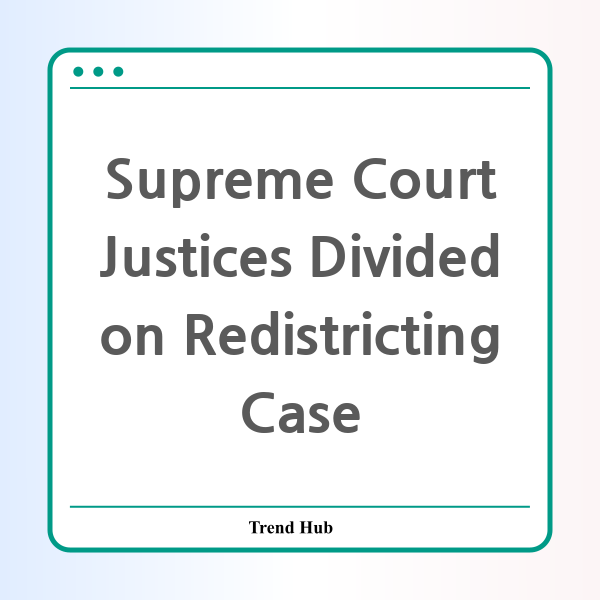* This website participates in the Amazon Affiliate Program and earns from qualifying purchases.

As the ongoing legal saga surrounding Louisiana's congressional district map unfolds, attention is drawn toward the Supreme Court justices and their divergent perspectives on race-based redistricting. The heart of the case is Louisiana's sixth congressional district, now a majority-Black district, and the implications it holds for the future of the Voting Rights Act.
The Supreme Court's recent deliberations reveal a sharp divide between the justices. On one side, the three liberal justices—Sonia Sotomayor, Elena Kagan, and Ketanji Brown Jackson—expressed their belief that Louisiana lawmakers made a reasonable, good-faith effort to comply with judicial orders in drawing the new district. Kagan noted, "It was well, well, well within the parameters of a good faith, reasonable choice." This perspective highlights the complexities of race and politics in the drawing of electoral maps.
Contrastingly, the conservative justices appeared skeptical of the map's legitimacy. Their questioning revealed concerns about the original court ruling that mandated Louisiana to create a second majority-Black district. Justice Samuel Alito questioned the very foundation of the ruling, challenging whether Louisiana was bound to follow a decision they believed was incorrect. Such skepticism from the conservative wing raises significant concerns for advocates of minority voting rights.
Central to the case is the contention surrounding Section 2 of the Voting Rights Act, which prohibits discriminatory voting practices based on race. Black voters, who constitute approximately one-third of Louisiana's population, are the driving force behind the argument that the state legislature is obliged to create a second majority-Black district to ensure fair representation.
However, following the 2020 census, Louisiana's Republican-controlled legislature opted to retain only one majority-Black congressional district. This decision led to legal challenges from various groups, igniting a complicated interplay of judicial and legislative actions. In a series of court battles, a Democratic representative was elected to the newly drawn district, further complicating the ongoing ramifications of redistricting.
The conservative justices cast doubt on the motives behind the elongated shape of the new district, dubbed a "snake" due to its unusual layout stretching over 250 miles. Chief Justice John Roberts questioned whether the predominant consideration for crafting the district was indeed race or simply an attempt to safeguard Republican incumbents. The implication here is profound; if race is confirmed as a predominant factor, it could lead to further scrutiny and potentially restrictive measures on how lawmakers draw districts in the future.
Justice Neil Gorsuch's inquiries about whether a timeline exists for the protections of minority voters under Section 2 suggest potential shifts in the legal landscape surrounding race-based redistricting. Such considerations could undermine the integrity of the Voting Rights Act, leading to more convoluted legal battles and jeopardizing the representation of minority groups.
As the Supreme Court justices grapple with these issues, the implications of their decision will reverberate throughout the United States. Should they rule in favor of the conservative challengers, it could set a dangerous precedent, complicating future efforts to draw districts that are both representative and compliant with federal law. This case comes at a crucial juncture, as it represents one of several recent challenges to voting rights that reflect a broader national conversation about race, representation, and the ongoing impact of the Voting Rights Act.
In conclusion, the Supreme Court's handling of the Louisiana race-based redistricting case serves as a critical indicator of their stance on voting rights and racial considerations in political representation. As the court continues to hear arguments, the tension between preserving the rights of minority voters and the political interests of state legislatures will undoubtedly shape the future landscape of American democracy.
* This website participates in the Amazon Affiliate Program and earns from qualifying purchases.